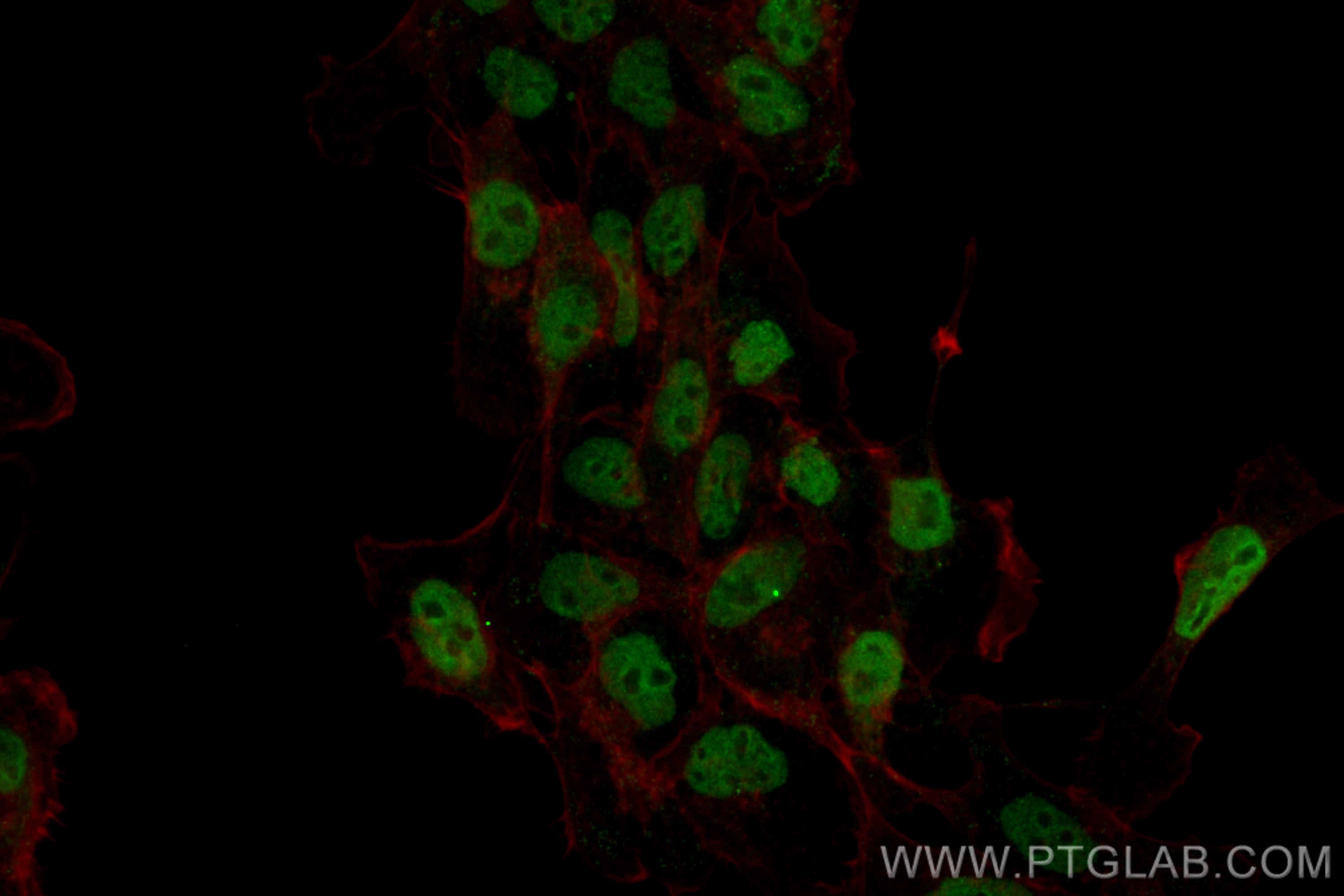Tested Applications
| Positive IF/ICC detected in | A431 cells |
Recommended dilution
| Application | Dilution |
|---|---|
| Immunofluorescence (IF)/ICC | IF/ICC : 1:50-1:500 |
| It is recommended that this reagent should be titrated in each testing system to obtain optimal results. | |
| Sample-dependent, Check data in validation data gallery. | |
Product Information
CL488-83891-6 targets ETV4 in IF/ICC applications and shows reactivity with human samples.
| Tested Reactivity | human |
| Host / Isotype | Rabbit / IgG |
| Class | Recombinant |
| Type | Antibody |
| Immunogen | ETV4 fusion protein Ag0984 Predict reactive species |
| Full Name | ets variant 4 |
| Calculated Molecular Weight | 54 kDa |
| Observed Molecular Weight | 61-65 kDa |
| GenBank Accession Number | BC007242 |
| Gene Symbol | ETV4 |
| Gene ID (NCBI) | 2118 |
| RRID | AB_3673323 |
| Conjugate | CoraLite® Plus 488 Fluorescent Dye |
| Excitation/Emission Maxima Wavelengths | 493 nm / 522 nm |
| Form | Liquid |
| Purification Method | Protein A purification |
| UNIPROT ID | P43268 |
| Storage Buffer | PBS with 50% glycerol, 0.05% Proclin300, 0.5% BSA, pH 7.3. |
| Storage Conditions | Store at -20°C. Avoid exposure to light. Stable for one year after shipment. Aliquoting is unnecessary for -20oC storage. |
Background Information
ETS translocation variant 4 (ETV4), also named as E1A-F or PEA3, is 484 amino acid protein, which contains one ETS DNA-binding domain and belongs to the ETS family. The calculated molecular weight of ETV4 protein is 54 kDa, but the phosphorylated ETV4 is a 54-61 kDa protein. ETV4 as a transcription activator localizes in the nucleus and binds to the enhancer of the adenovirus E1A gene.
Protocols
| Product Specific Protocols | |
|---|---|
| IF protocol for CL Plus 488 ETV4 antibody CL488-83891-6 | Download protocol |
| Standard Protocols | |
|---|---|
| Click here to view our Standard Protocols |



